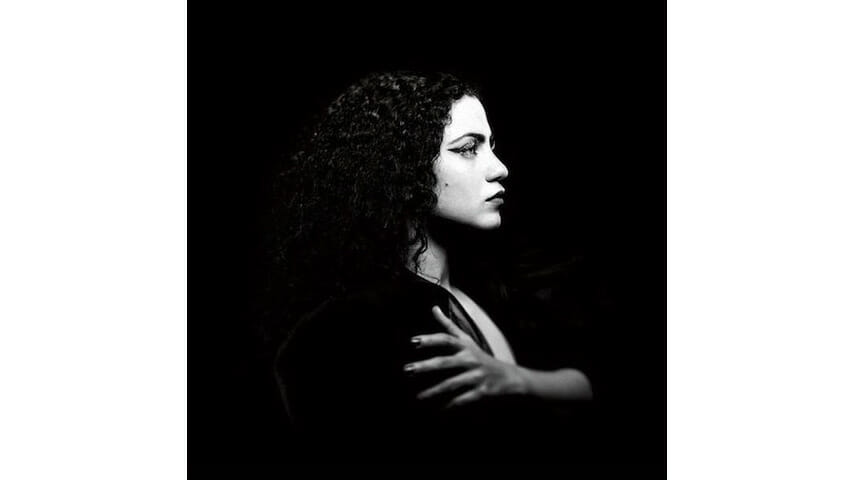
Singer/songwriter Emel Mathlouthi fled her home of Tunisia country due to political unrest in 2008. She moved to Paris that year and then to New York City only about two years ago. But during the height of the Arab Spring, her voice—striking in timbre, wide in range and profound in meaning—became one of the most prominent among Arab-speaking artistic communities.
These days, Mathlouthi’s voice soars and warbles on her second full-length LP, Ensen. The title, the Arabic word for “human” written out in Romanized text, represents the social, political, and emotional challenges we face in our lifetimes. But the music—full of programmed beats, electronic percussion, Tunisian gumbri (a pitched string instrument native to north Africa), guitar, cello and piano—yield a jagged pastiche of sounds that seem both native and foreign to Western ears.
Most strikingly, Mathlouthi’s vocal control throughout Ensen is masterful. She skips octaves with ease on songs like “Ensen Dhaif” (“Human, Helpless Human”). She veers operatic on “Khayef” (“Afraid”) and animalistic on “Thamlaton” (“Drunkenness”). Impressively, Mathlouthi does not restrain herself to chromatic scales; rather, she incorporates semitones (like blue notes in jazz)— just in passing so that they ring and resonate enough to catch you off guard—even if the music mostly remains within Western scales.
Lyrically, Ensen serves as document of the resistance. In the liner notes, she includes the original Arabic script, as well as the words translated into French and English. “Lost” might be the most accessible song on Ensen because Mathlouthi belts the chorus in English, but it’s certainly not the most dramatic or evocative track on the record. “Kaddesh,” which allows an understated keyboard melody to crawl beneath double timed vocals, asks in Arabic, “How many?” in regard to casualties of war, broken families and more. Tellingly, in the last line of the closing track, “Shkun Ena” (“Who Am I”), Mathlouthi expresses the existential fear, “I forget who I am.” Yet, she’s right there—on the stark black and white side-profile of the cover photo and the name for which she calls all of this work. She is human. We are human.